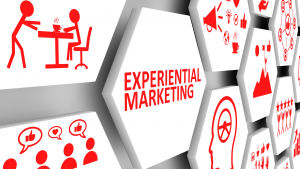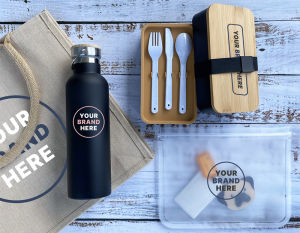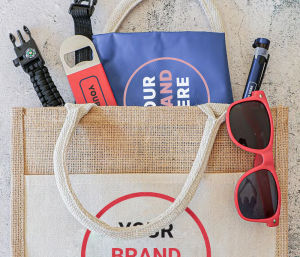Unlock the realm of Experiential Marketing with Payless Promotions! Delve into the world of immersive brand experiences, explore cutting-edge strategies for 2023, and discover how promotional products elevate business campaigns.
Experiential marketing has emerged as a powerful tool for brands to connect with their target audience on a deeper level.
By creating immersive and memorable experiences, brands can leave a lasting impact on consumers, fostering brand loyalty and driving sales.
In this blog post, we will:
- Jump into the world of experiential marketing
- Explore the latest strategies for 2023
- Discuss the role of promotional products in enhancing campaigns
- Learn how to measure campaign success
- Examine real-life case studies of successful experiential marketing campaigns
Understanding Experiential Marketing
Experiential marketing focuses on creating meaningful interactions between brands and consumers. It goes beyond traditional advertising by immersing consumers in unique experiences. The aim is to evoke emotions and build strong connections.
These experiences could include pop-up shops, virtual reality installations or interactive digital platforms. Engaging all five senses is the secret ingredient to crafting unforgettable memories that linger long after the experience ends.

Strategies for Experiential Marketing in 2023
Consumer behaviours continue to evolve due to technological advancements and shifting societal trends. Which means marketers need to adapt their strategies accordingly.
Here are some of the latest techniques for experiential marketing in 2023:
Personalisation
Tailoring experiences based on individual preferences is crucial for capturing consumers’ attention.
Brands can customise user interactions by leveraging data analytics and artificial intelligence (AI). This could take shape in the form of personalised content or even product recommendations.
Integration of Technology
Using technology in experiential marketing campaigns takes things to a whole new level. It leads to more immersive and interactive experiences.
From augmented reality (AR) to virtual product try-ons through mobile apps. It’s all about showcasing the brand’s creativity, leaving people with mind-blowing experiences they’ll always remember.
Influencer Collaborations
Partnering with influencers or micro-influencers can drastically amplify the reach of an experiential campaign.
Influencers can provide authentic testimonials and create buzz through their social media platforms and social networks.
Gamification
Adding gamification elements to experiential marketing experiences can do wonders for engagement.
To get people involved, you could incorporate challenges, rewards or interactive games at events or on digital platforms. It’s about creating a friendly and interactive atmosphere that keeps everyone coming back for more!

Embracing Sustainability in Experiential Marketing
Consumers are increasingly becoming conscious of the environment. There are high expectations for brands to take sustainable initiatives.
Integrating sustainability into experiential events and marketing campaigns is a great way to demonstrate your commitment to the environment. It’s also a great way to keep new and existing customers satisfied.
Here are some ways to embrace sustainability in experiential marketing:
Eco-Friendly Installations and Materials
When designing experiential marketing installations or event setups, opt for eco-friendly materials. Consider using recycled or upcycled materials, sustainable fabrics, or biodegradable elements.
For example, choose materials like bamboo or recycled cardboard instead of traditional signage made from PVC.
Recycling and Waste Management
Implement recycling and waste management practices at events or activations to minimise the environmental impact. Clearly label recycling bins throughout the venue and provide instructions on what can and can’t be recycled.
Collaborate with local recycling facilities to ensure proper disposal of waste generated during the event.
Energy Efficiency
Incorporate energy-efficient technologies into your experiential marketing experiences. One simple step is to switch to LED lighting instead of traditional bulbs. These LED lights not only create a pleasant ambiance but also help you save on electricity, which is ideal for reducing your energy consumption.
Consider using renewable energy sources such as solar panels to power your event setup.
Sustainable Transportation Options
Encourage attendees to use sustainable transportation options when travelling to your event. You could provide incentives for carpooling, cycling, or using public transportation. Promote these options through your promotional materials and social media channels.
Partnerships with Charitable Organisations
Collaborate with charitable organisations aligning with your brand values and sustainability goals.
For instance, you could donate a portion of the proceeds from the experiential campaign to an environmental cause or work together on eco-friendly initiatives before, during, or after the event. There are numerous reforestation, tree-planting and beach clean-up projects you can support.
Education and Awareness
Use your experiential marketing campaign as an opportunity to educate attendees about sustainability.
Set up informational displays or interactive exhibits that raise awareness about environmental issues. You could also provide tips for attendees to adopt more sustainable lifestyles.
Reusable and Sustainable Promotional Products
When selecting promotional products for your campaign, prioritise reusable items made from sustainable materials.
Examples include reusable water bottles, bamboo utensil sets, or organic cotton tote bags.
These products align with the sustainability message and serve as ongoing reminders of the positive experience associated with your brand.
Measuring Environmental Impact
In addition to measuring traditional metrics like engagement and reach, consider tracking the environmental impact of your campaign.
This could involve calculating carbon emissions from transportation, energy usage, or waste produced during the event. Use this data to set goals for reducing environmental impact in your future campaigns. When attendees see that you are progressively taking steps to minimise your impact on the environment, they are more likely to trust your intentions and remain loyal customers.
Remember, authenticity is critical when incorporating sustainability into your campaigns. Ensure that your efforts align with your brand values and that you have a genuine commitment to positively impacting the environment.

The Role of Promotional Products in Experiential Marketing
Promotional products play a significant role in enhancing the impact of experiential marketing campaigns. They can also provide tangible reminders of the experience and reinforce brand messaging.
Here are some ways promotional products can be effectively integrated into a winning experiential marketing strategy:
Brand Visibility
Distributing branded merchandise such as t-shirts, caps, or tote bags during events will increase brand visibility.
These products serve as walking billboards for the brand long after the event concludes.
Interactive Giveaways
Incorporating interactive promotional products that engage all five senses is a surefire way to make a lasting impact on consumers. By appealing to sight, sound, touch, taste, and smell, you create a multi-dimensional experience that resonates with your audience.
For instance, distributing reusable cups and utensils can be an ingenious way to evoke the senses of sight, taste and touch. They look great and are better for the environment, they keep your drinks hotter or colder for longer and they keep the taste better than plastic or cardboard.
Social Media Amplification
Offering unique branded props or hashtags increases social media visibility for the event and the brand. This word-of-mouth promotion extends the reach of the campaign beyond physical attendees.
For instance, providing eye-catching props branded with your logo or message encourages attendees to include them in their photos and posts. Thus, spreading your brand’s presence across various social media platforms. This user-generated content becomes a powerful endorsement, reaching a broader audience and driving interest in your campaign.
Collectible Series
Creating a series of collectible promotional products tied to different campaign stages builds anticipation and encourages repeat engagement.
Each unique item can be distributed at different touchpoints, creating a sense of exclusivity and encouraging consumers to complete the collection.
Functional Value
Promotional products that provide practical use in consumers’ daily lives have higher chances of being used regularly.
Items like reusable water bottles, phone chargers, or portable speakers reinforce brand visibility and serve as reminders of your brand. People appreciate products they have a higher need for.

Measuring the Success of Your Experiential Marketing Campaign
Measuring the success of an experiential campaign is crucial. By evaluating its effectiveness, you can make informed decisions for future marketing strategies.
Marketing metrics like engagement and reach are helpful to see how a campaign is doing. But it’s important to dig deeper and use different ways to understand what people really think about it. Numbers are good, but hearing from people directly and getting their opinions is also valuable.
So, combining both quantitative data (numbers) and qualitative data (what people say) gives a better understanding of how consumers perceive the campaign. It’s like getting the full picture, and that’s extremely important for making smart marketing decisions.
Here are some specific strategies to consider:
Set Clear Objectives and Key Performance Indicators (KPIs)
Before launching an experiential marketing campaign, setting clear objectives is essential.
These objectives should be specific, measurable, attainable, relevant, and time-bound (SMART).
Once objectives are defined, establish key performance indicators (KPIs) that can be tracked throughout the campaign.
For example:
- Objective: Increase brand awareness among the target audience by 20%.
- KPI: Measure social media reach and impressions during the campaign period.
Surveys and Feedback Forms
Gathering feedback through surveys or feedback forms will help you understand satisfaction levels amongst consumers.
Create surveys with closed-ended questions for quantitative data analysis and open-ended questions for qualitative insights.
Some survey topics might include:
- Overall satisfaction with the event/experience
- Brand recall or recognition
- Likelihood to recommend the brand/product/service
- Perception of brand values communicated during the experience
Social Media Analytics
Monitoring social media metrics provides valuable insights into how consumers interact with your experiential marketing campaign.
Track metrics such as:
- Reach
- Engagement (likes, comments, shares)
- Sentiment analysis (positive/negative mentions)
- Hashtag usage
- User-generated content related to your event/experience
Use social media analytics tools or platforms’ built-in features to collect and analyse this data.
Compare these metrics with your predefined KPIs to evaluate the impact of your campaign on social media platforms.
Event Attendance Metrics
Collect data on metrics such as:
- Event attendance numbers
- Dwell time at different activations within events
- Foot traffic patterns
- These metrics can help evaluate overall event success
This information can be obtained through:
- Ticket sales records
- Radio-Frequency Identification (RFID) technology tracking systems
- Manual counting methods
- Digital check-ins
You can identify popular areas or activations within the event space by analysing event attendance metrics. You can also assess attendee flow throughout the experience.
Sales Data Analysis
Monitoring sales data before, during, and after an experiential marketing campaign helps determine its impact on purchasing behaviours.
Analyse sales figures across different periods to identify any spikes in demand directly related to the campaign.
Consider using unique discount codes or tracking URLs specific to your experiential marketing efforts to attribute direct campaign sales.
This allows you to measure ROI more accurately and understand how the experience influenced consumer purchasing decisions.
Qualitative Interviews
Qualitative interviews are a research method used to gather in-depth and detailed information from individuals or participants. In this type of interview, the focus is on exploring people’s opinions, experiences, and perceptions about a particular topic.
Conducting qualitative interviews with participants provides deeper insights into their experiences beyond what quantitative data can capture.
These interviews also allow attendees to express the following:
- Emotions experienced during the event/experience
- Key takeaways
- Memorable moments
- Any suggestions for improvement
Prepare a set of open-ended questions that encourage detailed responses, such as:
- How did you feel during the experience?
- What was the most memorable part of the event for you?
- Did anything about this experience change your perception of our brand/product/service?
- Can you make any suggestions on how and where we can improve for future events?
Consider conducting these interviews immediately after the experience so that it’s still fresh in attendees’ minds. You could also do post-event interviews through email surveys or phone calls. Either way, it’s important information to have if you want to continue to improve and build a successful campaign.
Comparative Analysis
Conducting a comparative analysis can help you gain deeper insights into the success of your campaign.
Compare data from previous campaigns or industry benchmarks to gauge overall performance and identify areas for improvement.
For example, compare attendance numbers or social media engagement metrics with previous events or industry averages.
Data Integration and Analysis
To get a comprehensive view of your campaign’s success, it’s crucial to integrate and analyse data collected from different sources.
Consolidate data from surveys, social media analytics, event attendance metrics, sales data, and qualitative interviews.
Utilise data visualisation tools or spreadsheet software to analyse and interpret the findings effectively. Look for patterns, trends, correlations between different data sets, and insights that align with your objectives and KPIs.

Case Studies of Successful Experiential Marketing Campaigns
To illustrate the effectiveness of experiential marketing strategies, we’ve put together some real-life case studies:
- Nike: The “Just Do It HQ” – Nike transformed a London warehouse into an immersive pop-up experience. Consumers could participate in fitness challenges, test new products, receive personalised coaching, and even design their own sneakers. Nike distributed branded merchandise like customised workout gear to participants which helped to amplify the buzz across social media.
- Coca-Cola: “Share a Coke” – Coca-Cola launched a campaign where they replaced their logo with popular names on their bottles and cans. This personalised touch encouraged consumers to share photos with their customised beverage containers on social media using the hashtag #ShareACoke. The campaign was successful in increasing brand engagement and created a personal connection with consumers.
- Red Bull: “Stratos Jump” – Red Bull sponsored Felix Baumgartner’s record-breaking freefall from space in 2012. By live-streaming this daring feat globally, Red Bull created an exhilarating experience that resonated with its target audience of extreme sport enthusiasts and adventurers.
In each of these campaigns, promotional products played a huge role in elevating the overall brand experience. These targeted products also extended the reach of each brand beyond the initial interaction.
A perfect illustration of this strategy is Nike’s ingenious distribution of customised workout gear during their events, which had a motivating impact on participants. Nike’s smart approach demonstrates how promotional products can become cherished keepsakes, solidifying the connection between the brand and its audience.

Conclusion
Experiential marketing has evolved into a powerful tool for brands to engage consumers on a deeper level. As consumer behaviours evolve, staying attuned to current trends is crucial for successful experiential marketing campaigns.
With careful planning, creative execution, and a focus on measuring success, you can elevate your brand’s engagement levels and create impactful experiences.
Want to create memorable connections with your audience? Discover how Payless Promotions promotional products can enhance your experiential marketing campaigns. Get in touch now!
Frequently Asked Questions
How does experiential marketing differ from traditional advertising?
Experiential marketing creates memorable interactions through immersive experiences. Traditional advertising typically relies on one-way communication through TV, print, or radio.
Why is personalisation important in experiential marketing?
Personalisation allows brands to tailor the experience to the specific preferences, interests, and needs of each participant. When people feel that an experience is tailored to them personally, they are more likely to feel valued and emotionally connected to the brand.
Personalising experiential marketing can have a significant impact on customer loyalty, data-driven insights and word-of-mouth marketing.
How can technology be integrated into experiential marketing campaigns?
Here are a few examples:
- Augmented reality (AR) games at events
- Virtual try-on experiences
- Interactive digital platforms
What role do promotional products play in experiential marketing?
Promotional products serve as tangible reminders of the experience. They reinforce brand messaging long after the initial interaction. Promo products also increase brand visibility, encourage social media amplification, and provide functional value to consumers’ daily lives.
How do you measure the success of an experiential marketing campaign?
Measuring the success of an experiential marketing campaign involves setting clear objectives and key performance indicators (KPIs) when you set your goals for the campaign.
Data collection methods include surveys and feedback forms, social media analytics, event attendance metrics, sales data analysis, and qualitative interviews.
How can I create a successful experiential marketing campaign?
Creating a successful experiential marketing events campaign requires strategic planning, creativity, and a deep understanding of your target audience.
Aligning the experience with current trends and consumer preferences while providing personalised interactions will help forge lasting connections with consumers.
